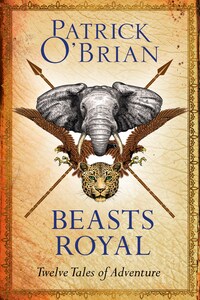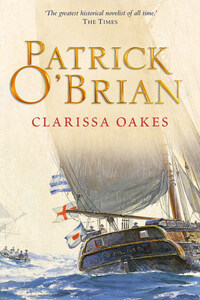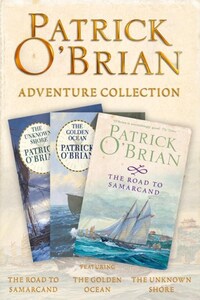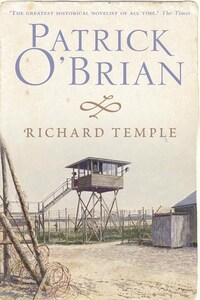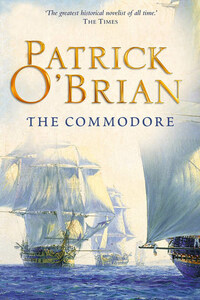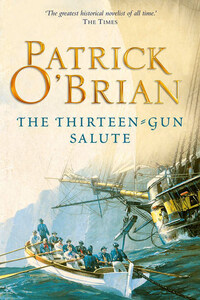Published by HarperCollinsPublishers Ltd
1 London Bridge Street
London SE1 9GF
www.harpercollins.co.uk
First published in Great Britain by Putnam 1934
Copyright © The Estate of the late Patrick O’Brian 1934
Cover design © HarperCollinsPublishers Ltd 2015
Cover illustrations © Shutterstock.com
Patrick O’Brian asserts the moral right to be identified as the author of this work.
Acknowledgement is made to the Oxford University Press for permission to use ‘Wang Kahn’ and ‘The White Cobra’, and to the editors of Chums and Greatheart respectively for ‘Skogula’ and ‘A Peregrine Falcon’.
A catalogue copy of this book is available from the British Library.
The short stories in this collection are entirely works of fiction. The names, characters and incidents portrayed in them are the work of the author’s imagination. Any resemblance to actual persons, living or dead, events or localities is entirely coincidental.
All rights reserved under International and Pan-American Copyright Conventions. By payment of the required fees, you have been granted the non-exclusive, non-transferable right to access and read the text of this e-book on screen. No part of this text may be reproduced, transmitted, down-loaded, decompiled, reverse engineered, or stored in or introduced into any information storage and retrieval system, in any form or by any means, whether electronic or mechanical, now known or hereinafter invented, without the express written permission of HarperCollins.
Source ISBN: 9780008112943
Ebook Edition © August 2015 ISBN: 9780008112950
Version: 2017-09-26
Number 206 was a tiger-shark, a long, lean man-eater, the terror of pearl-fishers and coral-divers. When he was very young he had been taken out of the sea in a net by a scientist in the Ichthiological Observatory, and a ring with the inscription T.S. 206 on one side and the observatory’s address on the other had been fastened in his gills and he had been entered in the books as shark No. 206.
Since then, however, he had had time to grow into the huge fish that was known as the Devil by the native pearl-divers of the Island of Waitoa in the South Seas.
The lagoon in which the pearl oysters bred was not very well protected by its storm-battered coral reef, and at high tide the sharks could come in with the rollers as they went over the half-submerged reef. The ground sharks and the bottle-nosed sharks could easily be frightened by splashing, or at the worst they could generally be kept off with a long knife, or if that failed they did not usually kill their victim, but only took an arm or a leg. But neither splashing nor a knife could deter a tiger-shark, nor would one ever be contented with an arm and give the wretched man a chance of life; they would take the whole man, leaving only scarlet water behind.
No. 206 was particularly dreaded by the pearl-divers; he would not stop for anything, and always got his man.
He would rise up from the oyster-beds like the shadow of death, and if once he reached his victim the man was dead.
He did not stay in the lagoon of Waitoa, however, as there were many other sharks, and the divers were very cautious.
One day, when a whaler called at Waitoa, 206 followed it as it left, and fed on the scraps which were thrown overboard.
The twenty-foot man-eater was not proud, and he would eat bad salt pork or potato peelings with the humblest dog-fish; he would often eat the humble dog-fish too.
No. 206 was always hungry; he would eat anything, including tin cans; given time he could digest them, and even thrive on them. The only time that his immense appetite was quite sated was when the whaler, which was in luck, caught three great sperm whales. They were towed along by the ship, and 206, in company with a host of other sharks, fed long and full, and the two little pilot fish which guided him to his prey became fat and slow.
The whaler, however, sailed south until she came to the icy Antarctic seas where the great whales bred, and thither the tiger-shark could not follow her, as he was used to the tropical seas in which he had been hatched.
He left the whaler when another ship crossed her path and followed the new ship, which was a slow, grain-carrying four-masted sailing ship, schooner rigged. She was from Sweden, and her name was the Björn Anderssen.
The tiger-shark followed her for many days until it happened that a Friday fell on the thirteenth of the month.
Now as Friday the thirteenth was notoriously a bitterly unlucky day, the wooden-legged sea-cook on board the Björn had felt justified in fortifying himself with rum, and he left his galley to go forward to the fo’c’sle, where one of the hands was known to possess a bottle.
